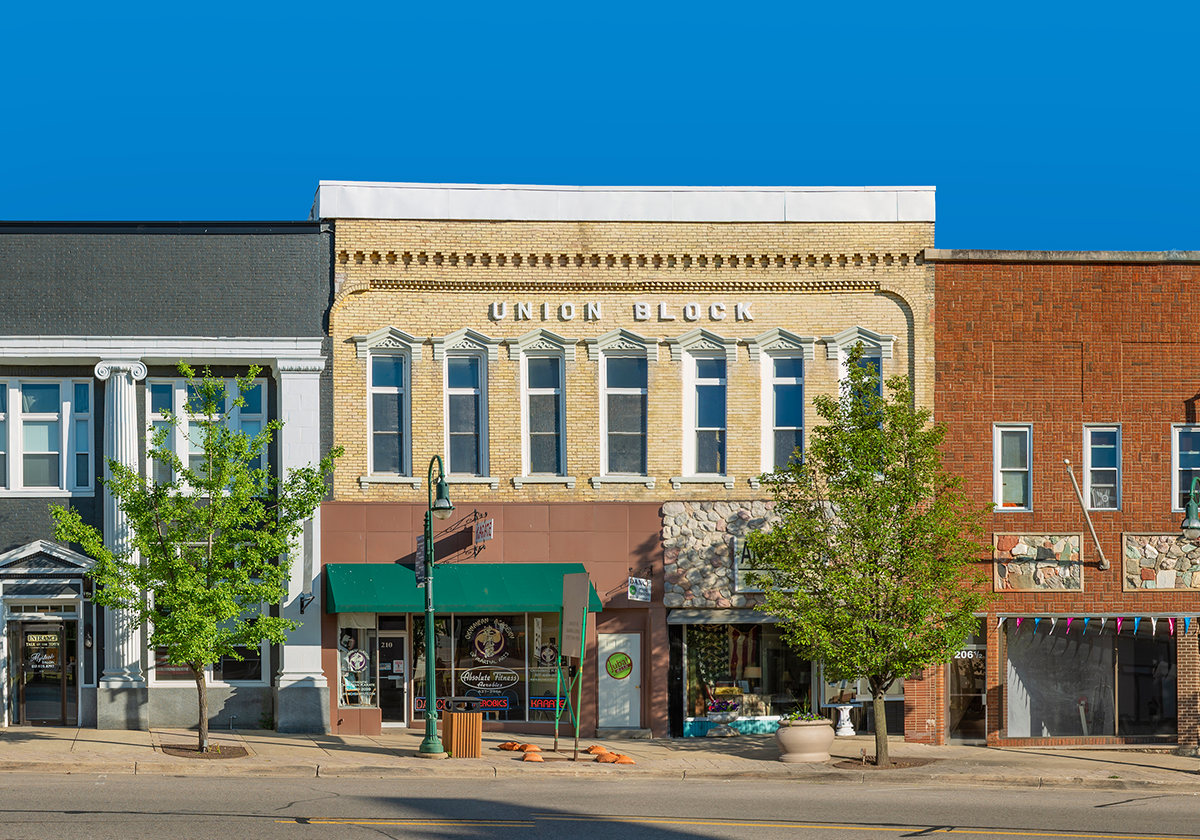Historic buildings are preserved as landmarks of architectural beauty and cultural importance in large cities and small towns across the United States. In addition to providing a tangible link to bygone eras, they can incur exceptional costs for insurers.
What are historic buildings?
The National Park Service (NPS) classifies historic places as sites, objects, structures, buildings, and districts significant in American history, architecture, archeology, engineering, and culture.1
- Sites: Locations of significant events, both prehistoric and historic (examples include battlefields and shipwrecks)
- Objects: Smaller items of cultural importance (examples include fountains, sculptures, and monuments)
- Structures: Functional constructions used for things other than shelter (examples include bridges and factories)
- Buildings: Constructions created primarily for sheltering human activity (examples include houses, hotels, churches, government buildings, and barns)
- Districts: A concentration of the other four types of properties
There are different tiers of historical recognition in the United States. The NPS maintains the National Register of Historic Places (NRHP), a federal list of historic places within the U.S. Additionally, each state has its own State Historic Preservation Offices (SHPO), localized bodies within individual states.
 The five different types of historic places:
The five different types of historic places:
sites, objects, structures, buildings, and districts.
Related:
Unreinforced Masonry Buildings: A Hidden Danger
Buildings listed on the NRHP are not bound by any restrictions on what non-federal owners may do with their property unless federal money is attached to the property. That said, local state preservation laws can still limit what an owner may do with their property.
Owners may be forced to operate in accordance with strict preservation regulations regarding the modification, remodeling, and renovation of historic properties. In such cases, any modification, remodeling, or renovation of historic properties must be conducted with sensitivity to the historic nature of the property, including employing historic building methods with specific historical materials.
What is the process of achieving historic recognition?
The NRHP and SHPOs add buildings to their respective lists only upon conducting a professional review and approving sites, objects, structures, buildings, and districts for historic preservation.2 Sometimes, the NRHP and SHPOs nominate and review historic places; other times, third parties submit applications for historical recognition.
Private individuals, organizations, local governments, and American Indian tribes often initiate the application process, preparing the necessary documentation to indicate to the reviewing body the importance of their nominated property. Following the submission of an application, the SHPO of the state where the property is located can either:
- Reject the property outright
- Ask the submitting party to include further information regarding the historical merit of the property
- Approve the application and list the property within the state
- Approve the application and send the forms to the NPS for review and potential listing in the NRHP
Costs to insurers
There are several considerations that insurers must weigh when including historic buildings within their book of business:
Vulnerability:
Historic buildings may be more vulnerable to damage, especially fire, due to their age, design, and construction. And because of potentially uncommon construction practices, repairing the structure after damage can become expensive.3
Determination of value:
Traditional methods of value determination, such as market value, acquisition value, assembly costs, unit costs, or replacement costs based on square footage, are often insufficient when determining the value of a historic building.
Value estimates for historic properties often require using specialty contractors working in the specific niche style of the historic building to determine its worth. The overall cost estimate factors in historic building components and regulatory requirements to arrive at a true replacement cost.
Cost drivers:
Restoration or repair of historic buildings can be an expensive ordeal.4 Here are some of the factors that are likely to increase the cost:5
- Historic, hard-to-find components often need to be employed (decorative finishes, specific types of paint/wood, etc.)
- Specialized, skilled workers and contractors often must be brought in from distant locations
- Potential for working with hazardous materials (lead paint, asbestos, etc.)
- More labor time can be required to finish a job
- Bringing historic buildings up to code
- Achieving tax credit certification
Insurers who insure historic properties can be caught footing massive bills, whether due to their vulnerability to fire and other natural perils, or local and federal requirements mandating exacting approaches to restoration and repair. By effectively managing their risk concentration, they can provide coverage to their customers while ensuring that they don't become blindsided by overwhelming claims.
HistoricHound
It is important for insurance companies to have a complete understanding of their book of business. Using HistoricHound, insurers gain access to an accurate, up-to-date window into their concentration of historic building-related risk.
The process is fast and secure. All you have to do is submit your book of business, and our team returns a complete list of all historic properties.
Learn more by contacting our data experts.
[1] National Park Service, https://www.nps.gov/subjects/nationalregister/faqs.htm
[2] National Park Service, https://www.nps.gov/subjects/nationalregister/how-to-list-a-property.htm
[3] Rough Notes, https://roughnotes.com/rnmagazine/2010/september2010/2010_09p012.htm
[4] Building Conservation, https://www.buildingconservation.com/articles/insure/insure.htm
[5] The Horton Group, https://www.thehortongroup.com/historic-property-insurance











